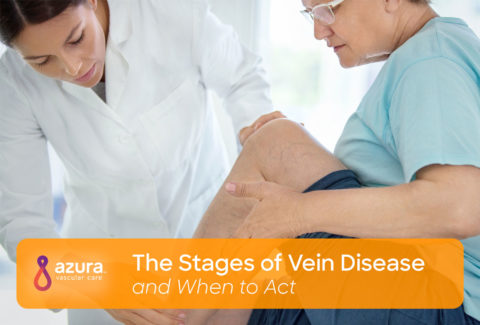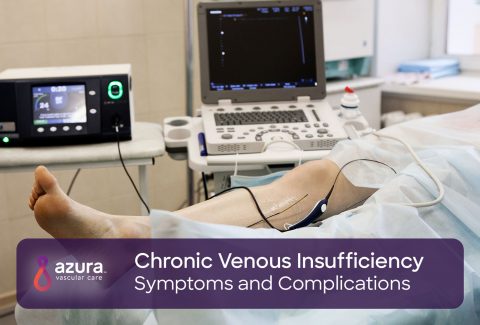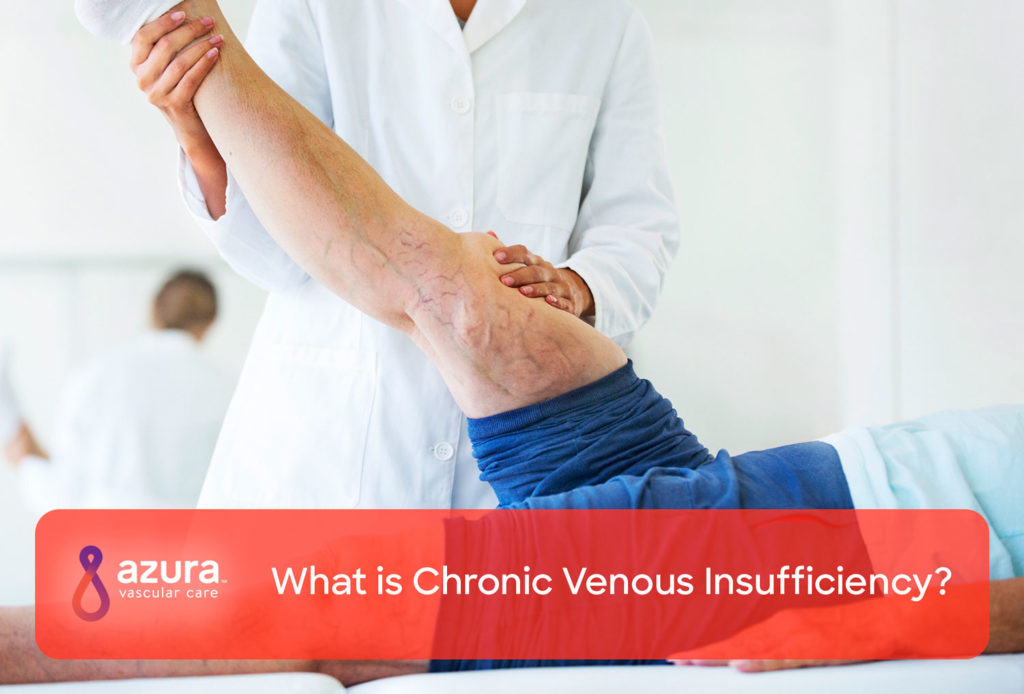
Answering the question—what is chronic venous insufficiency?—requires looking at the origins of the condition. Chronic venous insufficiency starts out as venous insufficiency, a failure of the veins to adequately circulate blood from the body and limbs back to the heart. When treatment is delayed, the condition becomes chronic and symptoms manifest.
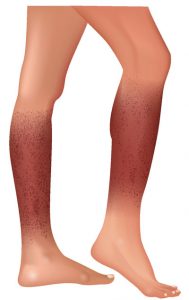 Chronic venous insufficiency occurs when the venous wall or the valves in the affected veins (typically in your legs) are not working correctly. When this happens, blood has a harder time returning to your heart from your legs. As a result, blood collects in these veins, a situation known as stasis. Left untreated, the disorder can lead to potentially serious complications. (i) Read on to learn more about chronic venous insufficiency.
Chronic venous insufficiency occurs when the venous wall or the valves in the affected veins (typically in your legs) are not working correctly. When this happens, blood has a harder time returning to your heart from your legs. As a result, blood collects in these veins, a situation known as stasis. Left untreated, the disorder can lead to potentially serious complications. (i) Read on to learn more about chronic venous insufficiency.
What Causes Chronic Venous Insufficiency?
The most common cause of chronic venous insufficiency is a blood clot in the deep veins of the leg, also known as deep vein thrombosis (DVT). Chronic venous insufficiency may also be caused by pelvic tumors and vascular malformations.
Risk factors for developing chronic venous insufficiency include:
- Deep vein thrombosis (DVT)
- Varicose veins – personal or family history
- Injury
- 50 years of age or more
- Obesity
- Pregnancy
- Sitting too often or being sedentary for prolonged periods
- Smoking
- Standing too often or failure to move or rest your legs for prolonged periods
Chronic Venous Insufficiency Symptoms
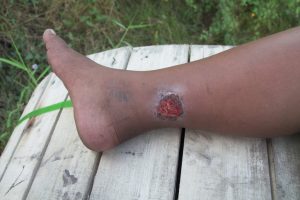
In the earliest stages, chronic venous insufficiency symptoms can be subtle. Sometimes understated warning signs like itchy legs or darkening skin near the ankles can be dismissed as dry skin, tan lines, or other discoloration.
A vascular specialist should assess you if you have some or all of the following chronic venous insufficiency symptoms:
- Brownish or darkening skin on your lower legs
- Leg cramps, itchiness, restlessness
- Leg pain, at rest or when walking
- Lower leg or ankle swelling
- Leg ulcers
- Tightening in calves
- New varicose veins
When to Seek Treatment for Chronic Venous Insufficiency?
An estimated 40-percent of people in the U.S. suffer from chronic venous insufficiency, and the Society for Vascular Medicine observes that only 10 percent seek treatment. This occurs more frequently in those who are 50 years or older, and more often in women than men. (ii)
The best time to seek treatment for chronic venous insufficiency is when you first notice the signs of chronic venous insufficiency. If you are in doubt about your symptoms—maybe experiencing some symptoms but not others—it is always better to err on the side of caution and have your veins assessed by a vascular specialist.
This condition, which can have serious consequences, is very treatable and your well-being is worth seeking relevant therapies! What is chronic venous insufficiency? It is a condition that Azura Vascular Care centers manage successfully every day!
Chronic Venous Insufficiency Treatment
Chronic venous insufficiency treatment includes lifestyle changes such as smoking cessation, weight loss and exercise. Medical interventions, described below, include minimally invasive treatments and surgery. (iii)
Here are a few options for the treatment of chronic venous insufficiency:
- Compression stockings—these snug-fitting socks support your legs and help optimize blood flow. This is the most conservative approach to treatment.
- Medications—sometimes antibiotics are used to treat skin infections. Other medications may be prescribed to help prevent blood clots or for the treatment of dermatitis, fungus or other conditions. These medications can include topical creams and/or pills. Sometimes an Unna Boot, which is a medicated wrap, is used.
- Sclerotherapy—for this injection therapy, a small needle is used to inject veins with medication that disrupts the lining of the vein. This helps to shut down the vein altogether and soon this vein is absorbed by the body.
- Endovenous ablation—this minimally invasive therapy uses radiofrequency or laser energy to close off the problematic veins.
- In some rare cases, surgery is warranted.
If you think you might be suffering from chronic venous insufficiency or related issues like varicose veins or deep vein thrombosis, call 844-832-VEIN (8346) today to schedule an appointment with a vascular specialist.
Sources:
(i) Sachdev, U., Vodovotz, L., Bitner, J., Barclay, D., Zamora, R., Yin, J., … Vodovotz, Y. (2018). Suppressed networks of inflammatory mediators characterize chronic venous insufficiency. Journal of Vascular Surgery: Venous and Lymphatic Disorders, 6(3):358-366. https://www.sciencedirect.com/science/article/abs/pii/S2213333X17305371.
(ii) Cleveland Clinic. Chronic Venous Insufficiency (CVI). (12/15). Retrieved December 3, 2018, from https://my.clevelandclinic.org/health/diseases/16872-chronic-venous-insufficiency-cvi.
(iii) Henke, P.K. Chronic venous insufficiency. Society of Vascular Surgery. Assessed September 30, 2018. https://vascular.org/patient-resources/vascular-conditions/chronic-venous-insufficiency.


